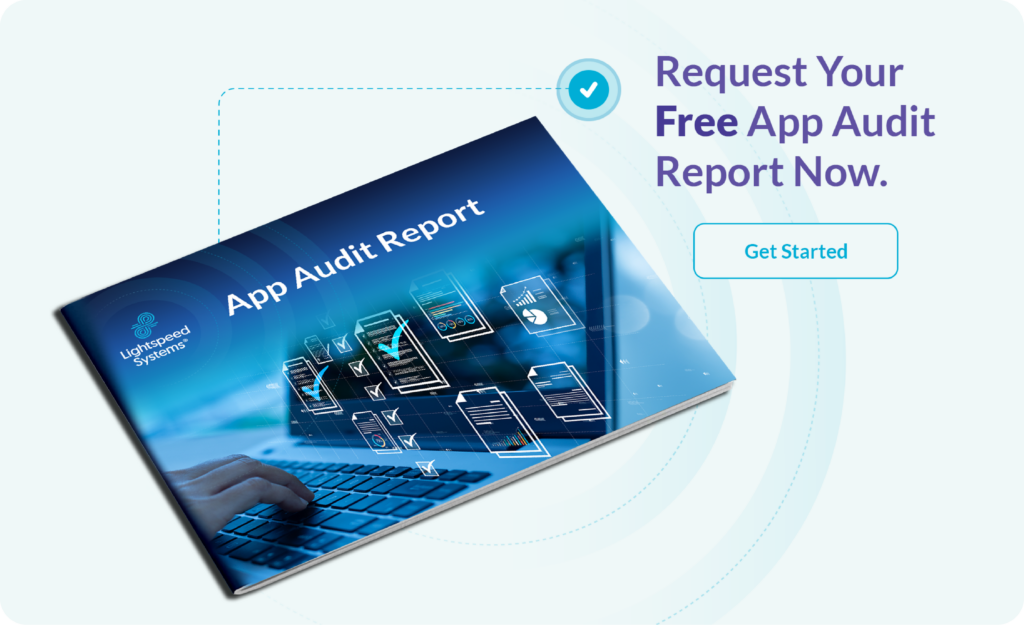Budgets are tighter. Teams are leaner. And the pressure to justify every tool, license, and device has never been higher. But school districts are getting smart—cutting costs without compromising on safety, instruction, or access.
We’ve pulled together 7 proven cost-saving tips, backed by large district leaders and recent data from the 2025 CoSN EdTech Leadership Survey, to help you focus your strategy and stretch your budget.
📊 CoSN stat: 24% of districts expect to reduce software license spending this year.
1. Reclaim Budget by Aligning Licenses to Actual Enrollment
Many districts have experienced enrollment declines, but are still renewing app licenses based on outdated enrollment numbers. That’s wasted money. Review every renewal to reduce seat counts to today’s numbers.
“If we're paying for licenses for students that we no longer have, we stay current with that to make sure we’re getting the best bang for our buck.”
Rebekah Gibbs, Caddo Parish School District
2. Shift from Districtwide to School-Based App Funding
Not every tool needs a districtwide license. If a tool’s only used at a handful of schools, let them fund it. Looking at app usage by school lets you identify what does, and doesn’t, need a district-wide license.
“What is the district going to purchase, and what are we going to pivot… to a school-based budget? Insight allows for exactly what it says—insight into those conversations.”
Melissa Smead, Colorado Springs SD 11
🎯 Pro tip: Use data to empower schools to make informed purchasing decisions—and free up central budget in the process.
3. Eliminate Redundant Tools That Do the Same Thing
Tool overlap happens fast—especially across departments. Over time, you’re paying for multiple apps that solve the same problem. This happened when schools moved fast to keep students learning during COVID; now it’s time to clean up.
4. Use Device Data to Delay or Avoid Unnecessary Refreshes
Devices are expensive, and budgets for them are shrinking.
📊 CoSN stat: 39% of districts expect to reduce device funding this year.
Use tools like 光速信号™ to monitor device health, storage, and use—and to reassign or repurpose before you replace.
“We started to use Insight along with devices to try and really understand: what is the best bang for our buck?”
Melissa Smead, Colorado Springs SD 11
5. Cut the Apps Nobody’s Using
Post-pandemic app bloat is real. Tools adopted in a hurry are now sitting idle—and still charging renewal fees.
“We analyze all those tools quite frequently… what needs to stay and what needs to go.”
Rebekah Gibbs, Caddo Parish School District
🎯 Pro tip: Kill the ghost licenses. Keep the ones that earn their spot.
6. Cut Apps That Don’t Meet Privacy or Security Requirements
If a tool doesn’t meet your privacy or cybersecurity standards, it’s not just risky—it’s expensive. One breach, one violation, one complaint from a parent or board meeting, and you’re dealing with costs far beyond licensing.
“We actually have a very large engagement when we're looking at applications… that includes everything down to the privacy policy. An app’s privacy policy hasn’t been updated in two years? Denied. You will never use that app in our district.”
Kevin Brooks, Loudoun County Public Schools
🧠 Pro tip: Use tools like Lightspeed Insight to flag apps with unclear privacy policies, excessive data collection, or outdated compliance. Then cut them.
BONUS: Save by considering the cost of inaction
Sometimes, the biggest budget risk isn’t what you’re spending—it’s what you’re ignoring.
When districts don’t monitor tool usage, underused licenses quietly renew. When device health goes unchecked, refreshes come too soon. When apps go unvetted, privacy violations slip through. And when signs of student distress are missed, the consequences can be tragic—and expensive.
From compliance fines and legal fees to insurance hikes and PR disasters, the cost of doing nothing can dwarf the cost of doing it right.
Visibility isn’t just a way to save money—it’s a way to protect it.
💡 Final Word
This year, smart savings start with visibility. Use the data you already have to:
- Cut what’s not being used
- Right-size what is
- Reassign instead of replace
- Meet requirements before they become expensive problems
💥 Budget pressure isn’t going away. But waste? That’s optional.


